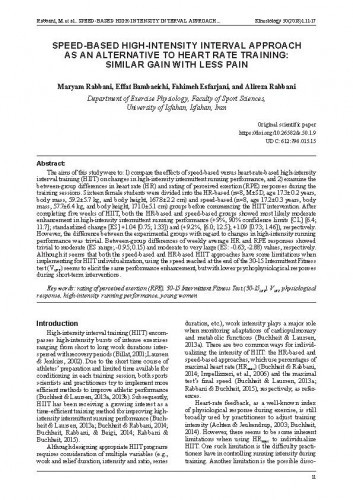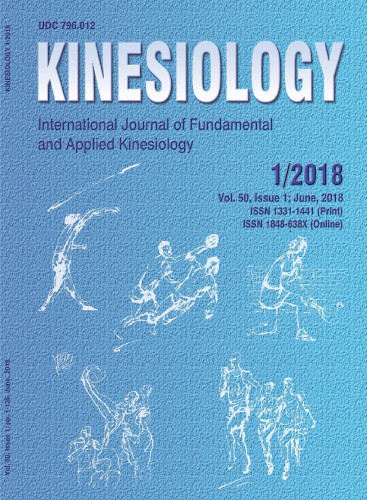The aims of this study were to: 1) compare the effects of speed-based versus heart-rate-based high-intensity interval training (HIT) on changes in high-intensity intermittent running performance, and 2) examine between-group differences in heart rate (HR) and rating of perceived exertion (RPE) responses during the training sessions. Sixteen female students were divided into the HR-based (n=8, M±SD, age 17.3±0.2 years, body mass, 59.2±5.7 kg, and body height, 167.8±2.2 cm) and speed-based (n=8, age 17.2±0.3 years, body mass, 57.7±6.4 kg, and body height, 171.0±5.1 cm) groups before commencing the HIT intervention. After completing five weeks of HIT, both the HR-based and speed-based groups showed most likely moderate enhancement in high-intensity intermittent running performance (+9%, 90% confidence limits [CL] [6.4; 11.7]; standardized change [ES] +1.04 [0.75; 1.33]) and (+9.2%, [6.0; 12.5]; +1.09 [0.73; 1.46]), respectively. However, the difference between the experimental groups with regards to changes in high-intensity running performance was trivial. Between-group differences of weekly average HR and RPE responses showed trivial to moderate (ES range; -0.95; 0.15) and moderate to very large (ES: -0.63; -2.88) values, respectively. Although it seems that both the speed-based and HR-based HIT approaches have some limitations when implementing for HIT individualization, using the speed reached at the end of the 30-15 Intermittent Fitness test (VIFT) seems to elicit the same performance enhancement, but with lower psychophysiological responses during short-term interventions.
Sažetak

 Kinesiology : 50,1(2018) / editor-in-chief Dragan Milanović.
Kinesiology : 50,1(2018) / editor-in-chief Dragan Milanović.